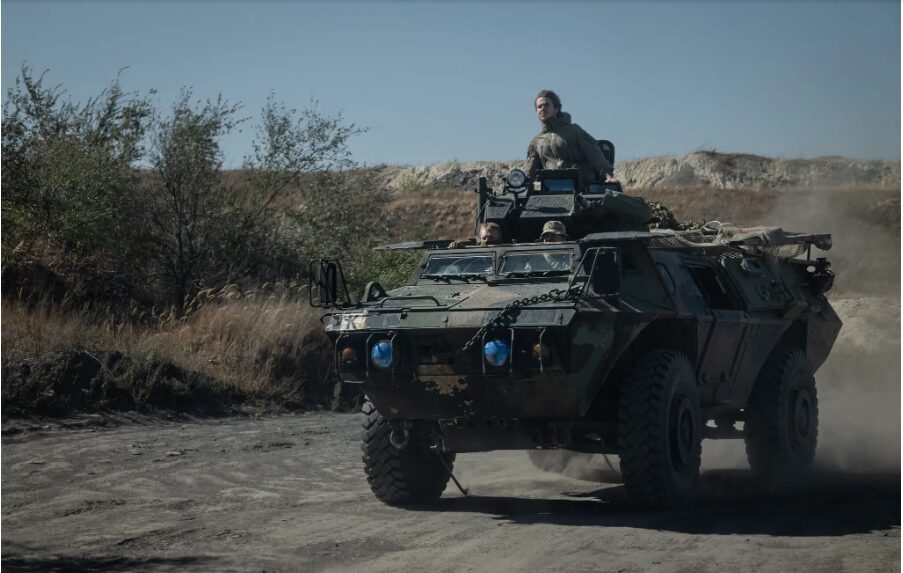It was in January this year. Russian forces in the Kursk region received an alert from Moscow, which said there was “potential for a breakthrough at the state border.” Then, in February, the next warning came. Russian forces were told that “a rapid push from the Sumy region into Russian territory, up to a depth of 80 kilometers [50 miles]” is expected. The next alert came in mid-June, which said Ukraine aimed to capture Sudzha and disrupt Russian supply lines by targeting a key bridge over the Seim River.
These details have emerged from documents that Ukraine’s soldiers allegedly seized from Russia’s Kursk territory. These papers reveal that Russia knew about Ukraine’s Kursk plans for months. The Guardian reported that these documents belonged to Russia’s Interior Ministry, Federal Security Service (FSB) and military units.
Russia had also begun preparation ahead of this planned offensive by Ukraine. Special training sessions were held and defences were boosted on the frontlines.
Now, the question is, if Russia knew about Ukraine’s Kursk plans for months and if it really had been preparing for it, then how come this incursion was allowed to happen? Was it a security failure on part of Russia?
Politico reported last week that senior officials both in Russia and Ukraine knew beforehand that such an offensive inside Russia would prove to be suicidal.
When Ukraine President Volodymyr Zelensky first floated the idea of Kursk offensive, he was advised by now former armed forces commander Gen. Valery Zaluzhny not to go ahead with it.
Others who opposed the offensive included the highly respected Emil Ishkulov, commander of Ukraine’s 80th Air Assault Brigade. He was dismissed in July amid protests from high-ranking officers who called for him to be kept in post.
The commanders said in a protest video, “We don’t understand why commanders who have unquestioned authority among the personnel, who have a victorious combat record and experience of a big war, are out of favor to the ranks of the armed forces.”
Politico cited local media as saying Ishkulov was dismissed because he “opposed a task that didn’t correspond to the brigade’s strength.”
Ishkulov objected to the Kursk operation, fearing his brigade could eventually be too exposed inside Russia and that the casualty toll could rise precipitously.
Ishkulov knew it was a gamble, one that could turn Kursk into a graveyard for Ukrainian forces. But he was sacked. In Ukraine, no one is allowed to question the sanity of the supreme leader.
In Moscow, the plan was clear. Its enemy was about to make a deadly mistake and Russia won’t stop it. So, when the Kursk offensive officially began in August, Russia deliberately allowed Ukraine’s fighters to occupy the region. Russia knew it would stretch Kyiv’s resources even thinner in eastern Ukraine, making it easier for Russian troops to advance westwards.
And that’ what exactly happened.
Kursk offensive didn’t stop Russian troops from continuing to score some tactical gains in Donetsk. Ukraine’s casualties are increasing rapidly in Donetsk, forcing Kyiv to now withdraw some units from Kursk to beef up defenses in eastern Ukraine.
Now, even media is reporting that Kursk essentially became a trap for Ukraine.
Russian troops are now less than ten kilometers away from Pokrovsk, a key logistics hub, and their offensive is intensifying in the northwest of Donetsk, towards Chasiv Yar, and in the southwest, in Vuhledar.
Since defensive lines behind Pokrovsk aren’t as well fortified, this could pave the way for a Russian breakthrough next spring.
Kursk offensive tuned out to be a disaster and Zelensky needs to be immediately sacked for it. But guess what, he is now back in Washington, with an even bigger begging bowl and biggest ambitions, with a victory plan: Not Ukraine’s, Russia’s!
